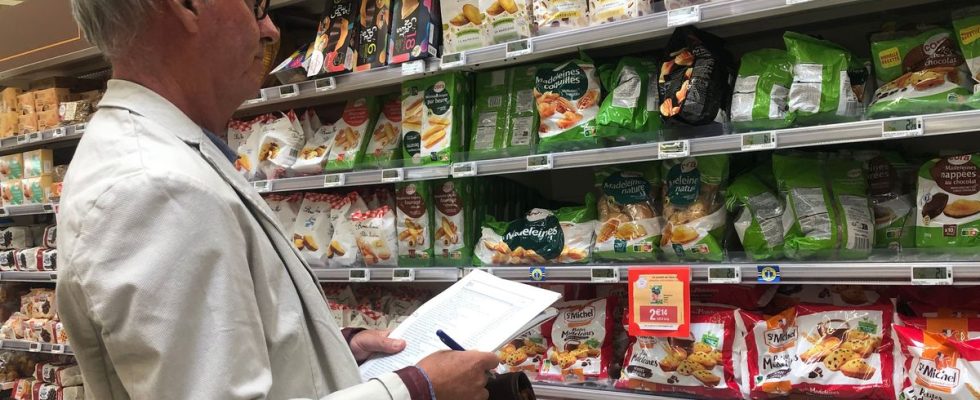He walks discreetly through the shelves with a pen and a notebook in his hand. And when it’s time to go to the checkout with his trolley full of items, he doesn’t pay anything, taking care, however, to check whether the prices on his ticket correspond to those displayed in the store. Vincent Lunel is a special client, to say the least. Head of the department of competition, consumption and the repression of fraud in Ille-et-Vilaine, he is responsible, like about twenty other agents in the department, for verifying the practices of retail chains.
His mission takes him this Friday morning to a hypermarket in the suburbs of Rennes to check compliance with the anti-inflation quarter by the brand. Launched in mid-March by the government and extended until the end of the year, this operation invites distributors to offer a selection of products “at the lowest possible price” to relieve consumers a little, strangled by the rise in price. However, each actor puts what he wants in his basket and today there are 1,700 basic necessities referenced on a national scale, all marked by a tricolor logo bearing the words “Anti-inflation quarter. »
Few anomalies since the start of the operation
The store targeted this Friday offers about a hundred on its shelves. And sales are there according to its director. “For this box of organic green beans, sales were multiplied by six, for example,” he says, without specifying how much the price of the product has dropped. The price paid at checkout for this item is in any case consistent with that displayed in the store. “This was the case for all the articles tested”, indicates Vincent Lunel at the end of his control operation.
However, some brands are not all equally scrupulous, with sometimes significant price differences that fool the customer. “But since the start of controls on the quarterly anti-inflation operation, it remains marginal,” says Guillaume Carrof, head of the competition, consumption and fraud prevention unit at the Regional Directorate for the Economy, Employment. , work and solidarity (Dreets). Sanctions are also quite rare. “It’s often pedagogy or a warning,” he continues. We only verbalize if we find an anomaly greater than 3 or 4% between the price paid at the checkout and that displayed in the store. »
Is the customer really a winner?
If the supermarket chains seem to respect the rules, is the consumer really a winner in this operation? Yes, if we are to believe the government, which ensures that the price of products for the anti-inflation quarter has fallen by 13%. The UFC Que Choisir association has not made the same calculation and estimates for its part that the prices of the products concerned “have increased slightly” in most brands over a quarter.
On Thursday, the Familles Rurales association gave a layer of it by assuring that the anti-inflation quarter “did not keep its promises” with a price increase of 3% on a basket of 34 “healthy” products respecting the recommendations of the health authorities. A real battle of numbers in which the consumer has a little trouble seeing clearly.

